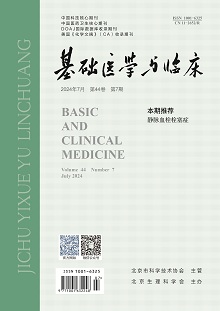DR2 attenuates myocardial ischemia/reperfusion injury of rats in vitro
2014, 34(10):
1372-1375.
 Asbtract
(
116 )
Asbtract
(
116 )
 PDF (777KB)
(
512
)
Related Articles |
Metrics
PDF (777KB)
(
512
)
Related Articles |
Metrics
Objective To observe the effects of dopamine receptors-2 (DR2) on the myocardial ischemia/reperfusion (I/R) injury in rats and to study the possible mechanisms. Methods 40 Wistar rats were randomly divided into 4 groups (n=10): control group, I/R group, Bromocriptine group (Bro) and Haloperidol group (Hal). Myocardial ischemia/reperfusion injury of isolated rats was induced with Langendorff system; The heart function was recored by Powerlab; LDH, CK activities of coronary effluent and SOD activity and MDA content of myocardial tissue homogenate were measured by colorimetric method; Myocardial cell apoptosis was detected by TUNEL staining; The expression of DR2, Bcl-2, caspase-3 and caspase-9 was detected by Western blot. Results Compared with control group, the expressions of DR2, Bcl-2, caspase-3, caspase-9, the activity of LDH and CK, the MDA content, the rate of cell apoptosis were increased (P<0.01), but the SOD activity and heart function were decreased in the I/R group (P<0.01). Compared with I/R group, Bro decreased the activity of LDH and CK, the MDA content, the rate of cell apoptosis, the expression of caspase-3 and caspase-9, increased the SOD activity and Bcl-2 expressions, improved heart function (P<0.01). Hal did not change the above indexes. Conclusion Our results suggest that DR2 inhibites I/R injury through antioxidation, scavenging free radical, up-regulation of Bcl-2 expressions and down-regulation of caspase-3 and caspase-9 expressions.


